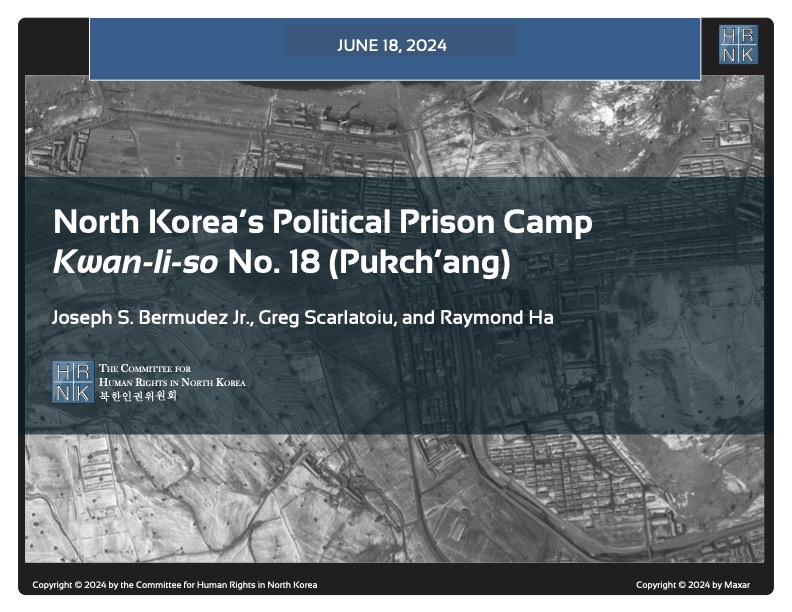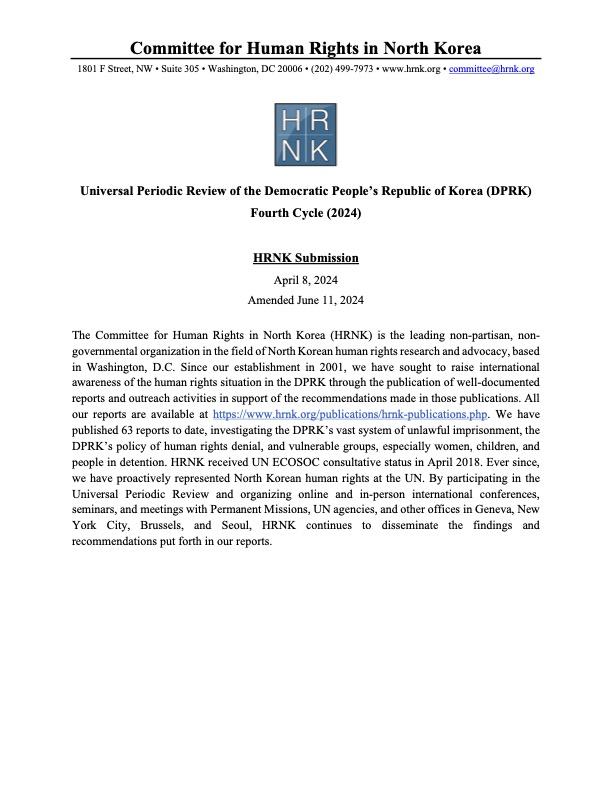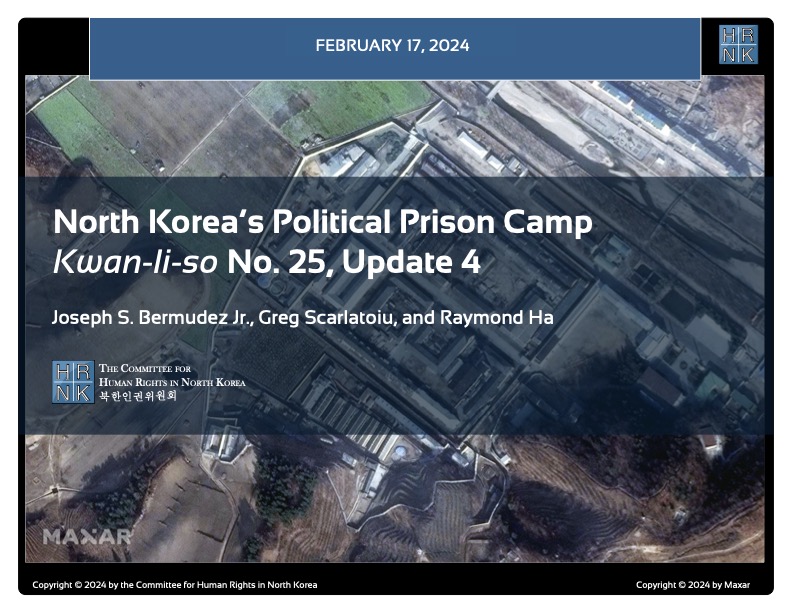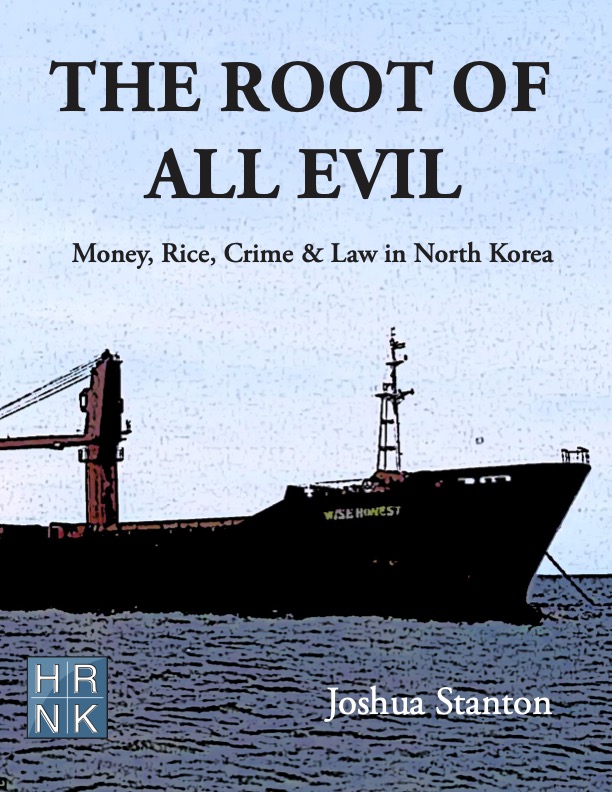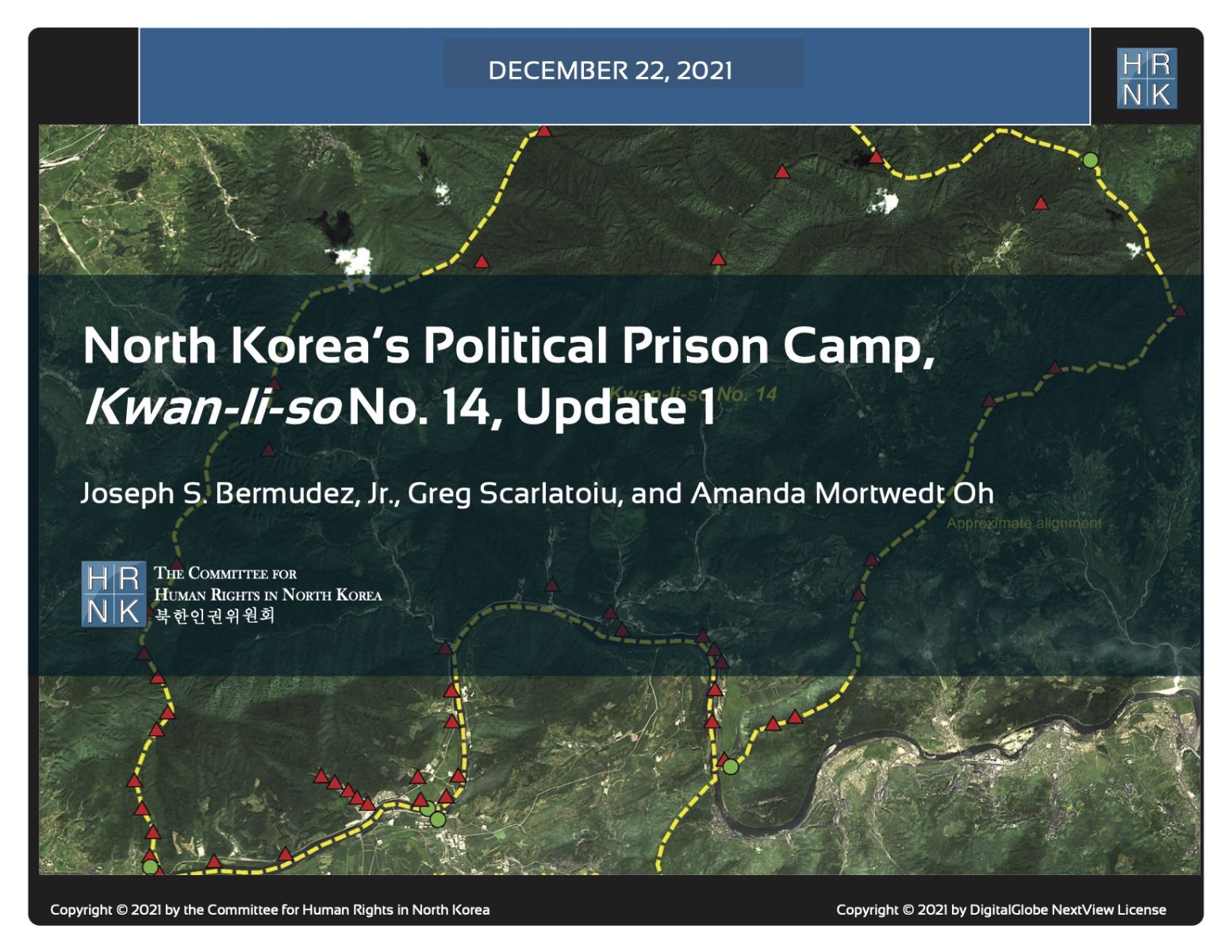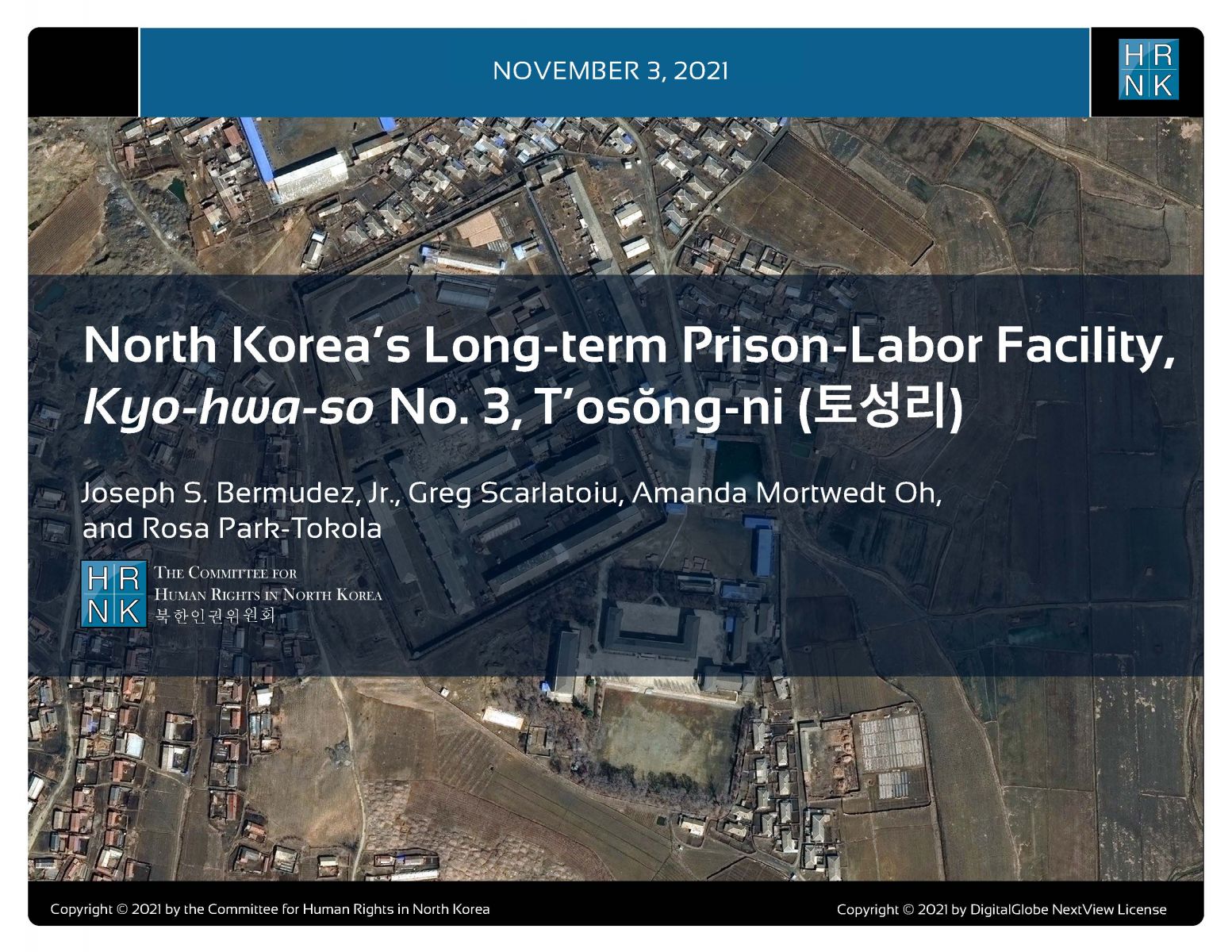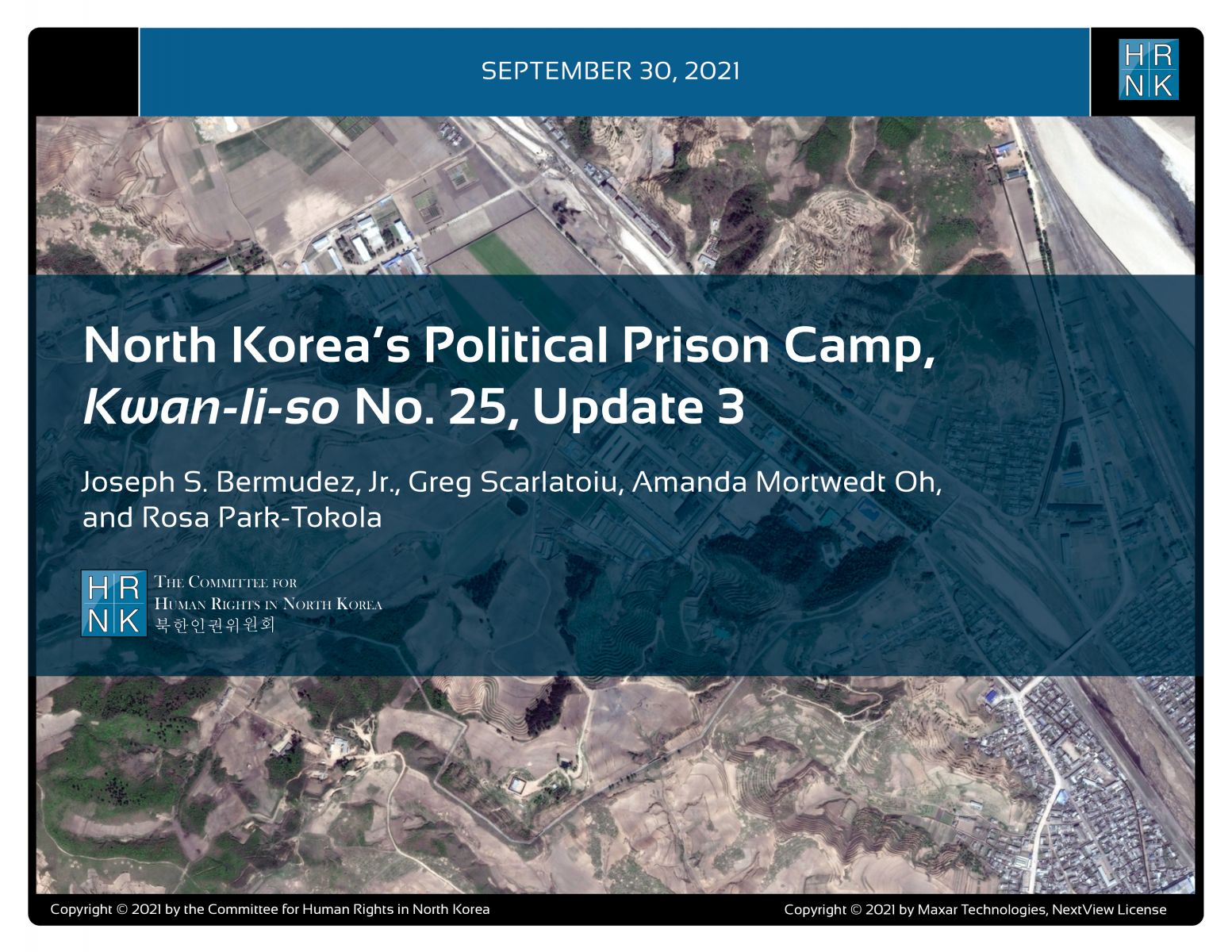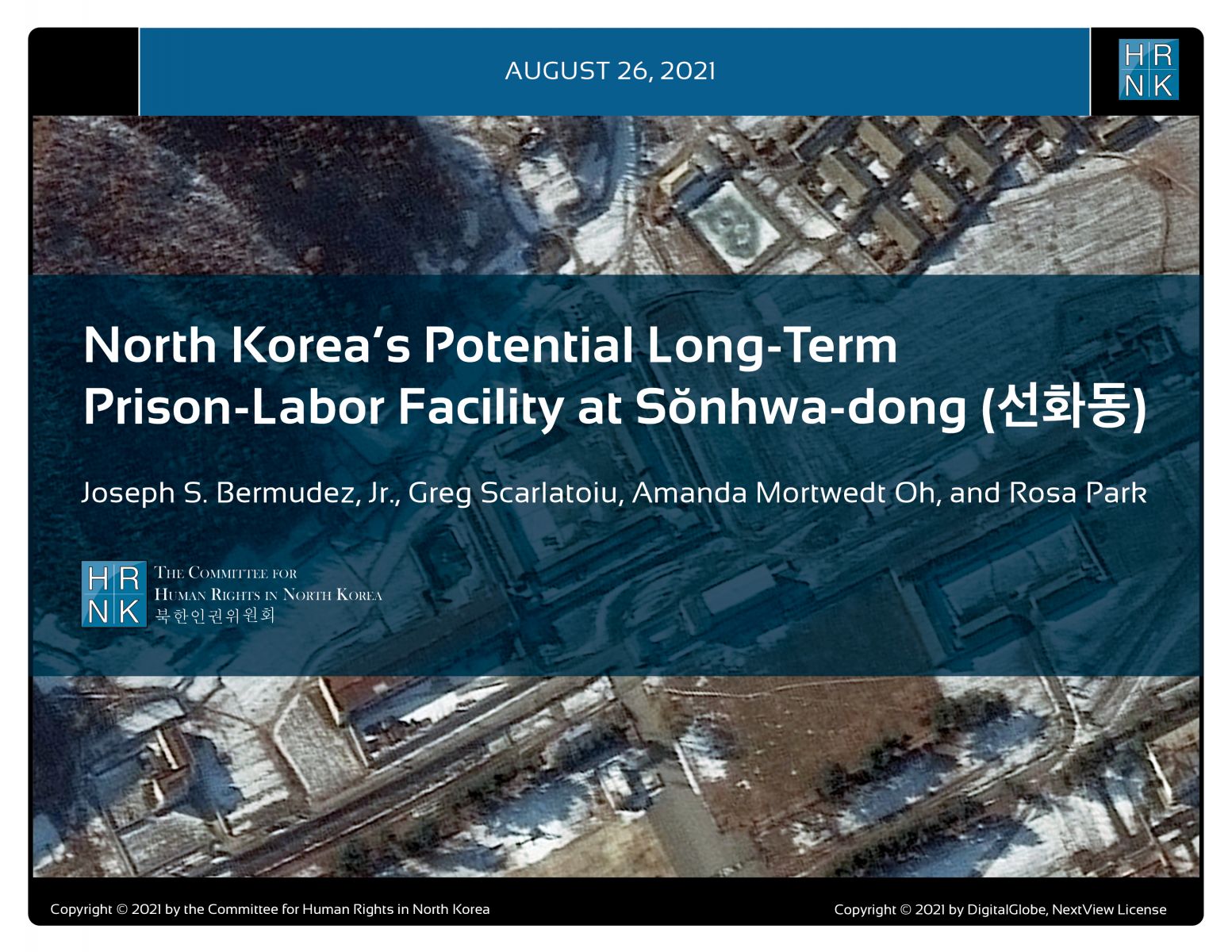Description:

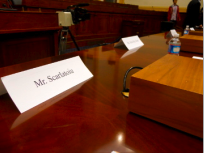



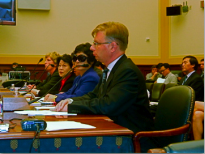
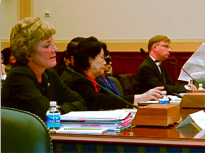
Please see the video gallery for a live recording of the hearing.
Good afternoon, Chairman Smith, Mr. Payne, and members of the Subcommittee. Thank you for inviting me to speak with you today about the human rights situation in North Korea, as that country prepares for a second hereditary transmission of top leadership, and about the apparent increase in the amount of information getting into North Korea. It is an honor and privilege to have an opportunity to discuss these issues with you today.
After North Korean leader Kim Jong-il allegedly suffered a stroke in the summer of 2008, the Kim regime proceeded with preparations for third generation succession. In September 2010, one day ahead of a rare Workers’ Party of Korea conference in Pyongyang, Kim Jong-il’s third son, Kim Jong-un, was made a daejang, the equivalent to an American Four-Star General. Kim Jongun’s selection as one of the two Vice-Chairmen of North Korea’s National Defense Commission and the Workers’ Party Central Military Commission appears to confirm that he has been designated to succeed Kim Jong-il as leader of North Korea. According to experts, should Kim Jong-un become North Korea’s leader, it is likely that Kim Jong-un’s uncle Chang Sung-taek will act as a regent in the early stages, as Kim Jong-il’s third son is still too young and inexperienced.
In April 2012, North Korea will celebrate the 100th birthday of its founder, “eternal president” Kim Il-sung, who died in 1994. The Kim regime has stated its goal of turning North Korea into a “strong and prosperous nation” (kangsong-daekuk) by the year 2012. The year 2012 may provide North Korea with an opportunity to take some significant steps towards the accomplishment of hereditary succession. The year 2012 will also mark possible changes in countries of key importance to North Korea: presidential elections will be held in March in Russia, in October in the People’s Republic of China, in November in the United States, and in December in South Korea. Changes affecting the Lower House and the government may also be expected in Japan during the year 2012.
According to experts and testimony by recent North Korean defectors, there is no evidence that the human rights situation in North Korea has improved as the Kim regime proceeds with steps towards leadership succession. On the contrary, it appears that, as North Korea engaged in gravemilitary provocations such as the sinking of the ROKS Cheonan on March 26, 2010, and the shelling of the South Korean island of Yeonpyeong on November 23, 2010, the bordercrackdown aimed at preventing North Koreans from defecting to China has intensified, and the political prisoner camp population has been on the increase.
The 2010 State Department Report on Human Rights Practices in North Korea, quoting The Washington Post and South Korea’s Donga Daily, estimates the total number of prisoners detained in political penal-labor camps to be between 150,000 and 200,000. In May 2011, Amnesty International released satellite imagery and new testimony shedding light on the horrific conditions in North Korea’s political prisoner camps. According to Amnesty International, the prisoner population detained at such camps is around 200,000, and a comparison of the latest satellite photos with satellite imagery from 2001 indicates a considerable increase in the scale of the camps. According to testimony by former inmates, many of those detained at these camps are unaware of the crimes they have allegedly committed. The majority of prisoners are held in areas inside the camps known as “Total Control Zones,” where they have to be detained until they breathe their last.
In 2003, based on prisoners’ testimonies and satellite imagery, the Committee for Human Rights in North Korea published one of the most comprehensive reports to date on North Korea’s political prisoner camp system, entitled “The Hidden Gulag: Exposing North Korea’s Prison Camps.” Our organization is currently working on the second edition of “Hidden Gulag,” based on information provided by North Koreans who were previously trapped in prison-labor camps.
Despite North Korea’s relentless denial that such camps exist, our research and interviews have revealed the detailed operation of an enormous system of arbitrary and extra-judicial detention coupled with a regime of forced labor that abuses scores of thousands of North Koreans at any one time, and has brutalized hundreds of thousands of North Koreans since the inception of this system.
Witnesses interviewed by our organization include about 60 of the hundreds of former North Koreans previously detained in the network of prison camps, penitentiaries, police detention facilities and mobile labor brigades. Their testimony and personal stories detail an extraordinary amount of unprovoked and unnecessary human suffering. This network of detention and forced labor facilities constitutes the North Korean “gulag,” appropriating the common name for the Stalinist prison-labor camps of the former Soviet Union.
Despite the political oppression affecting the overwhelming majority of North Koreans, more information from the outside world appears to be making its way into the world’s most reclusive nation. Although, officially, all personal radios must have a fixed dial and be registered with state security offices, programming by stations including Voice of America, Radio Free Asia and broadcasters based in South Korea may have a listenership of around 30% in North Korea. The number of radio sets smuggled from China has been on the increase. The North Korean authorities continue to attempt to jam foreign broadcasting, but face serious limitations in their efforts, as jamming is energy-intensive and North Korea is experiencing endemic energy shortages.
In recent years, we have also found out that there has been a significant increase in the amount of information entering North Korea via channels other than radio waves. This development is mostly the result of the marketization that has taken place in North Korea. Such marketization is by no means an intended top-down reform program, but rather a function of state failure. Mr. Kim Kwang-jin, a former high-ranking North Korean official who defected to South Korea, also a former visiting scholar and current non-resident fellow of our organization, has spoken about North Korea’s “three economies:” the centrally planned state economy, which is in a virtual state 3 of collapse; the “palace economy,” operating in the range of hundreds of million a dollars a year,employing North Korea’s military-industrial complex to earn the Kim regime the foreign currency needed to procure luxury goods and maintain its grip on power; and the “people’s economy,” much smaller by comparison, operating through informal markets to provide ordinary people a coping mechanism enabling them to survive.
During the informal marketization of North Korea, supply chains have developed from China to North Korea’s capital city of Pyongyang, and MP3 players, CD-ROMs, DVDs and thumb drives have been entering North Korea along these supply chains. Statistical data included in a 2010 survey of North Korean refugees and travelers by the Broadcasting Board of Governors indicate that 27% of respondents have listened to foreign radio, 48% have come in contact with foreign DVDs and other video material, while 27% have watched foreign TV. The same survey indicates that 74% of North Koreans have access to TV sets, 46% to DVD players, 16% to computers, and 8% to MP3 players. A subsequent study conducted by the BBG indicates that computer thumb drives are becoming increasingly popular, but are not yet as common as MP3 players. Such data imply access, and not ownership or in-home access to such devices.
Due to severe restrictions imposed not only on travel outside North Korea, but also inside that country, the majority of the defectors come from the border regions with China, such as the North Hamgyong Province. For that and other reasons, statistical data collected by the BBG or other organizations through defector interviews are not necessarily representative of the North Korean population generally, or the North Korean refugee population in China.
In addition to contributing to the increase in the flow of information into North Korea through the introduction of new electronic devices, another side effect of these informal supply chains is that information is also being passed from one member to the next along the chain. It appears that the “Korean Wave” (called Hallyu in South Korea and Nampoong, or “Southern Wind” in North Korea), including South Korean soap operas, other TV series, music and fashion, popular elsewhere in Asia and beyond, has also reached North Korea, in particular the capital city of Pyongyang, although the percentage of those aware of the “Korean Wave” is difficult to determine.
In January 2008, Egyptian company Orascom Telecom Holding was awarded a license to establish a 3G mobile network in North Korea. When Koryolink, North Korea’s cellular phone network was launched in December 2008, it had 5,300 subscribers. According to data released by Orascom, Koryolink’s parent company, North Korea’s cellular phone network reached 535,133 users in the January-March period of 2011, up from 431,919 users in the final quarter of 2010. On a year-to-year basis, the number of subscribers among North Korea’s 24 million people represented a jump of 420 percent from 125,661 in the first quarter of 2010. According to Orascom, during the first quarter of 2011, while the number of subscribers was on the increase, average monthly cell phone usage decreased from 316 minutes in the last quarter of 2010 to 270.
On a year-to-year basis, the decrease constituted a drop of 41 minutes compared to an average 311 minutes during the first quarter of 2010. While Orascom officials including Aldo Mareuse, the company’s Chief Financial Officer, have interpreted the decrease in average cell phone usage as the result of “lower income segments” entering the market, other experts disagree, and pointout that half a million out of a population of 24 million is still a low percentage, and it is likely 4that cell phones are still only in the hands of those close to the Kim regime. In its half-year earnings report for January-June 2011, published on August 10th, Orascom stated that the number of subscribers in North Korea had reached 660,000.
Separate from the expansion of the Koryolink network, citizens of North Korea have also been using Chinese cellular phones smuggled across the border into North Korea. Media organizations and NGOs in South Korea have even recruited North Koreans living inside North Korea as informants. The South Korean press and other media organizations including The New York Tmes have reported that, using Chinese cellular phones in areas of North Korea where a signal is available, a handful of North Koreans assume great risks to overcome North Korea’s near-total news blackout. Given that the level of political access these sources have is rather limited, the information they provide is not necessarily useful in understanding the inner workings of the Kim regime, but it offers valuable insights into everyday life in the world’s most secluded nation.
A group of experts that has recently traveled to North Korea was told by Koryolink representatives that 3G internet service via Apple iPad will be made available in Pyongyang this fall via a special SIM card developed by Koryolink. Nevertheless, internet access is likely to continue to be restricted to foreign residents and those close to the Kim regime. The percentage of North Koreans possessing computers not connected to the web is estimated to be around 3% of the entire population.
Because the North Korean people are so restricted in the information they receive about their own country and the outside world, the Committee for Human Rights in North Korea has recommended that the United States should continue to expand radio broadcasting into North Korea and encourage other efforts that provide information directly to the North Korean people in accordance with the North Korea Human Rights Act. Our Committee has also recommended that the United States should make known to the North Korean people that their welfare is of great concern to the American people.
Based on data collected through interviews with North Korean defectors and the proven track record of success in winning the ideological confrontation during the Cold War, radio broadcasting will likely continue to be one of the few media available to grant the people of North Korea access to information from the outside world. In addition to radios smuggled from China, computers not connected to the internet, thumb drives, DVDs, CD-ROMs and MP3 players have become increasingly available, although access to such devices is still relatively limited. Efforts to increase the flow of information into North Korea may benefit from takinginto account the increasing availability of such vehicles.
Thank you, Mr. Chairman, Mr. Payne, and members of the Subcommittee. I look forward to answering any questions you might have.
This is the first satellite imagery report by HRNK on a long-term political prison commonly identified by researchers and former detainees as Kwan-li-so No. 18 (Pukch'ang). This report was concurrently published on Tearline at https://www.tearline.mil/public_page/prison-camp-18.
To understand the challenges faced by the personnel who are involved in North Korea’s nuclear program, it is crucial to understand the recruitment, education, and training processes through the lens of human rights. This report offers a starting point toward that understanding. North Korea’s scientists and engineers are forced to work on the nuclear weapons program regardless of their own interests, preferences, or aspirations. These individuals may be described as “moder
In this submission, HRNK focuses its attention on the following issues in the DPRK: The status of the system of detention facilities, where a multitude of human rights violations are ongoing. The post-COVID human security and human rights status of North Korean women, with particular attention to sexual and gender-based violence (SGBV). The issue of Japanese abductees and South Korean prisoners of war (POWs), abductees, and unjust detainees.
This report provides an abbreviated update to our previous reports on a long-term political prison commonly identified by former prisoners and researchers as Kwan-li-so No. 25 by providing details of activity observed during 2021–2023. This report was originally published on Tearline at https://www.tearline.mil/public_page/prison-camp-25.
This report explains how the Kim regime organizes and implements its policy of human rights denial using the Propaganda and Agitation Department (PAD) to preserve and strengthen its monolithic system of control. The report also provides detailed background on the history of the PAD, as well as a human terrain map that details present and past PAD leadership.
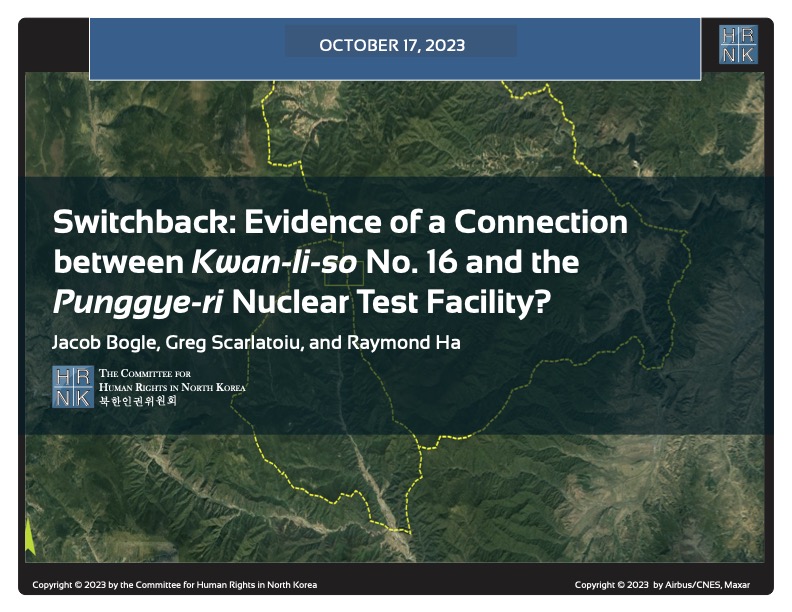
HRNK's latest satellite imagery report analyzes a 5.2 km-long switchback road, visible in commercial satellite imagery, that runs from Testing Tunnel No. 1 at North Korea's Punggye-ri nuclear test facility to the perimeter of Kwan-li-so (political prison camp) no. 16.
This report proposes a long-term, multilateral legal strategy, using existing United Nations resolutions and conventions, and U.S. statutes that are either codified or proposed in appended model legislation, to find, freeze, forfeit, and deposit the proceeds of the North Korean government's kleptocracy into international escrow. These funds would be available for limited, case-by-case disbursements to provide food and medical care for poor North Koreans, and--contingent upon Pyongyang's progress
For thirty years, U.S. North Korea policy have sacrificed human rights for the sake of addressing nuclear weapons. Both the North Korean nuclear and missile programs have thrived. Sidelining human rights to appease the North Korean regime is not the answer, but a fundamental flaw in U.S. policy. (Published by the National Institute for Public Policy)
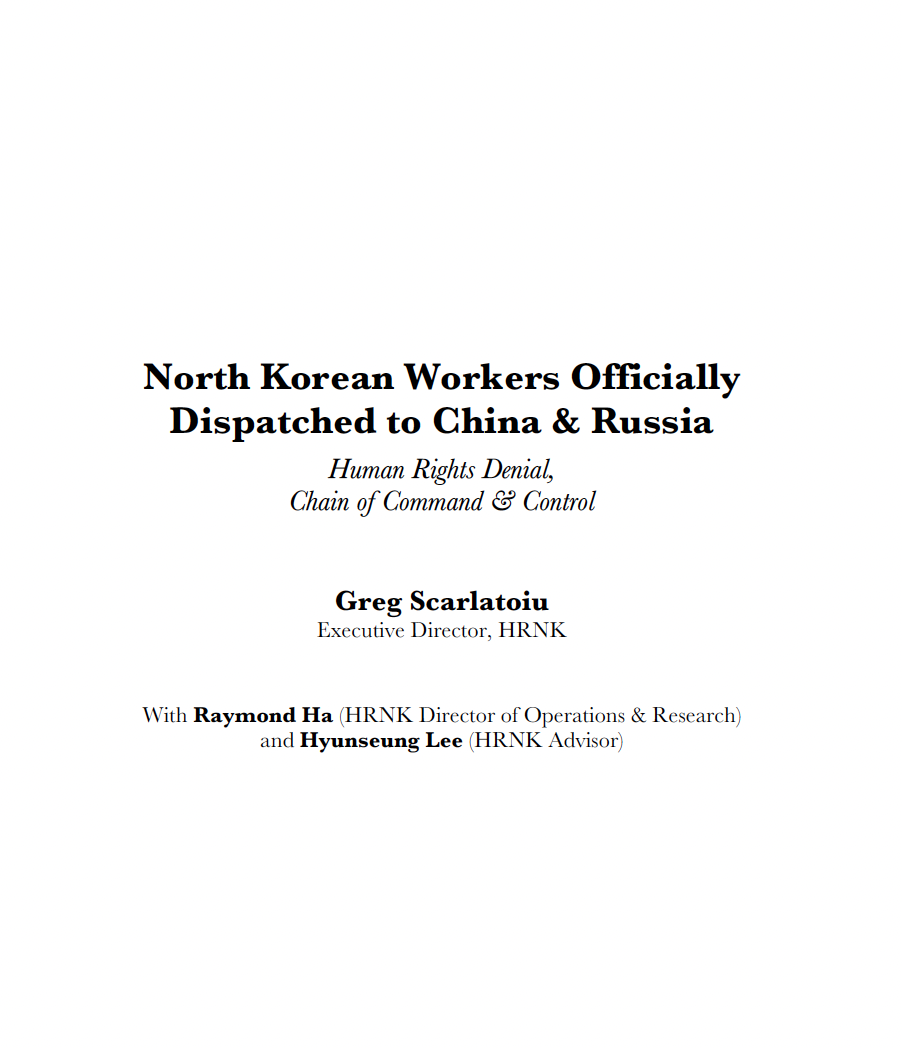
North Korea’s forced labor enterprise and its state sponsorship of human trafficking certainly continued until the onset of the COVID pandemic. HRNK has endeavored to determine if North Korean entities responsible for exporting workers to China and Russia continued their activities under COVID as well.
George Hutchinson's The Suryong, the Soldier, and Information in the KPA is the second of three building blocks of a multi-year HRNK project to examine North Korea's information environment. Hutchinson's thoroughly researched and sourced report addresses the circulation of information within the Korean People's Army (KPA). Understanding how KPA soldiers receive their information is needed to prepare information campaigns while taking into account all possible contingenc
This report is part of a comprehensive long-term project undertaken by HRNK to use satellite imagery and former prisoner interviews to shed light on human suffering in North Korea by monitoring activity at political prison facilities throughout the nation. This is the second HRNK satellite imagery report detailing activity observed during 2015 to 2021 at a prison facility commonly identified by former prisoners and researchers as “Kwan-li-so No. 14 Kaech’ŏn” (39.646810, 126.117058) and
This report is part of a comprehensive long-term project undertaken by HRNK to use satellite imagery and former prisoner interviews to shed light on human suffering in North Korea by monitoring activity at civil and political prison facilities throughout the nation. This study details activity observed during 1968–1977 and 2002–2021 at a prison facility commonly identified by former prisoners and researchers as "Kyo-hwa-so No. 3, T'osŏng-ni" and endeavors to e
This report is part of a comprehensive long-term project undertaken by HRNK to use satellite imagery and former detainee interviews to shed light on human suffering in the Democratic People’s Republic of Korea (DPRK, more commonly known as North Korea) by monitoring activity at political prison facilities throughout the nation. This report provides an abbreviated update to our previous reports on a long-term political prison commonly identified by former prisoners and researchers as Kwan-li-so
Through satellite imagery analysis and witness testimony, HRNK has identified a previously unknown potential kyo-hwa-so long-term prison-labor facility at Sŏnhwa-dong (선화동) P’ihyŏn-gun, P’yŏngan-bukto, North Korea. While this facility appears to be operational and well maintained, further imagery analysis and witness testimony collection will be necessary in order to irrefutably confirm that Sŏnhwa-dong is a kyo-hwa-so.
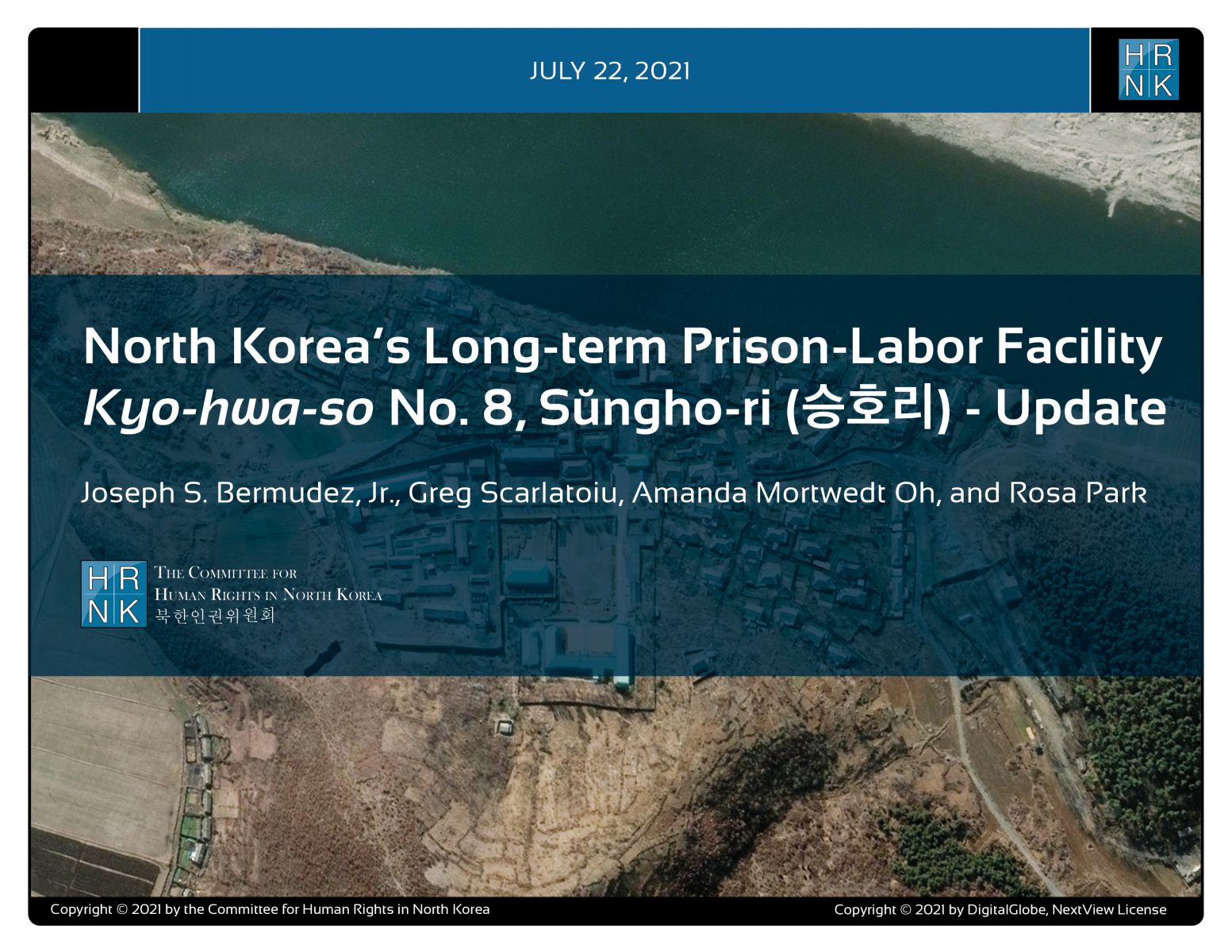
"North Korea’s Long-term Prison-Labor Facility Kyo-hwa-so No. 8, Sŭngho-ri (승호리) - Update" is the latest report under a long-term project employing satellite imagery analysis and former political prisoner testimony to shed light on human suffering in North Korea's prison camps.
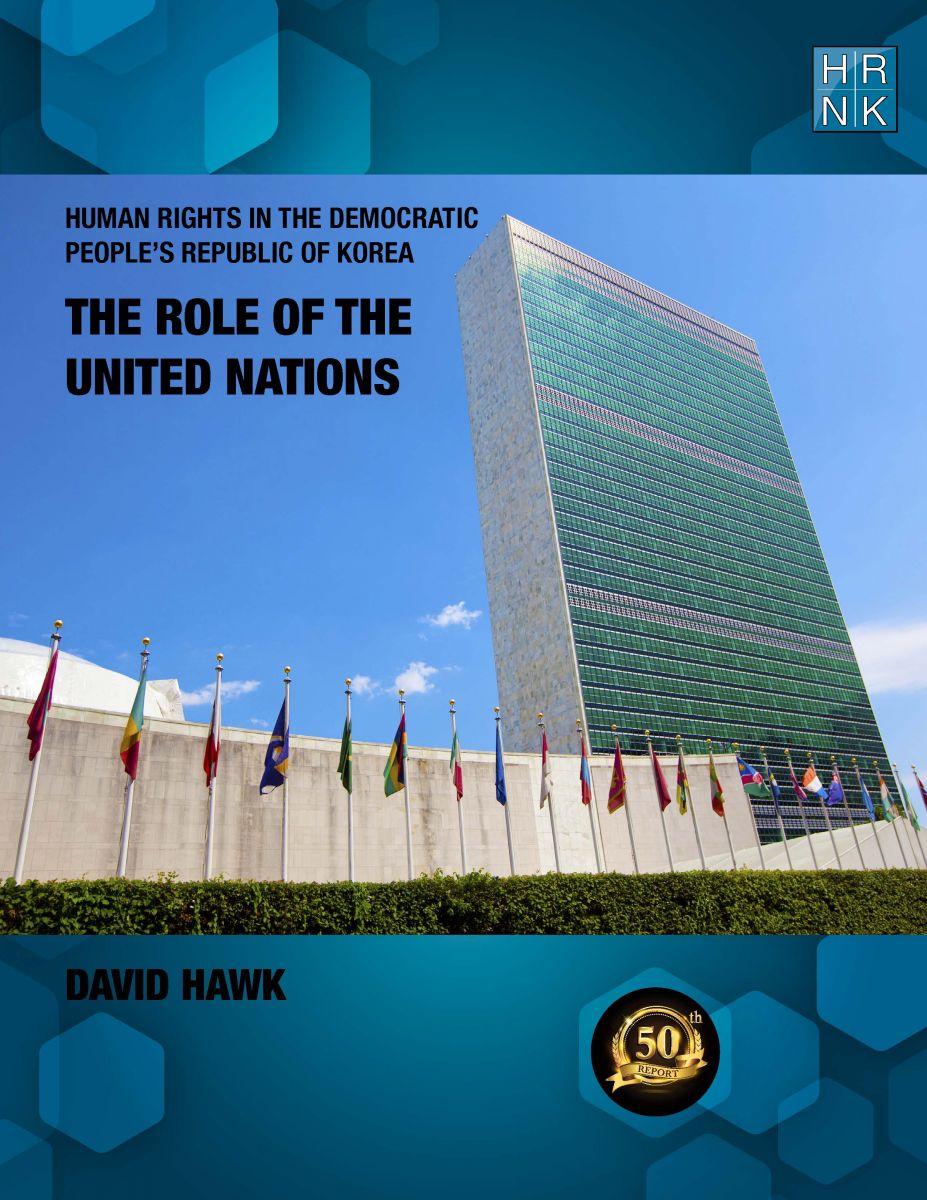
Human Rights in the Democratic Republic of Korea: The Role of the United Nations" is HRNK's 50th report in our 20-year history. This is even more meaningful as David Hawk's "Hidden Gulag" (2003) was the first report published by HRNK. In his latest report, Hawk details efforts by many UN member states and by the UN’s committees, projects and procedures to promote and protect human rights in the DPRK. The report highlights North Korea’s shifts in its approach
South Africa’s Apartheid and North Korea’s Songbun: Parallels in Crimes against Humanity by Robert Collins underlines similarities between two systematically, deliberately, and thoroughly discriminatory repressive systems. This project began with expert testimony Collins submitted as part of a joint investigation and documentation project scrutinizing human rights violations committed at North Korea’s short-term detention facilities, conducted by the Committee for Human Rights
